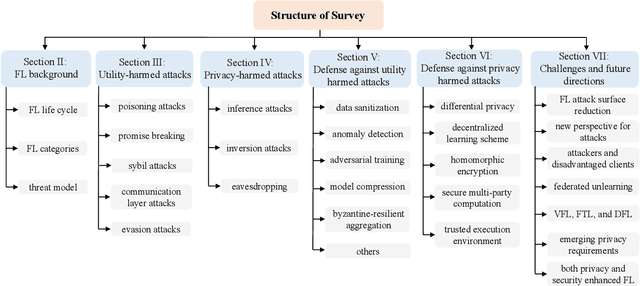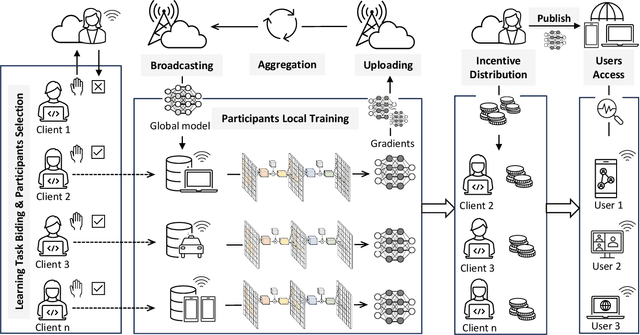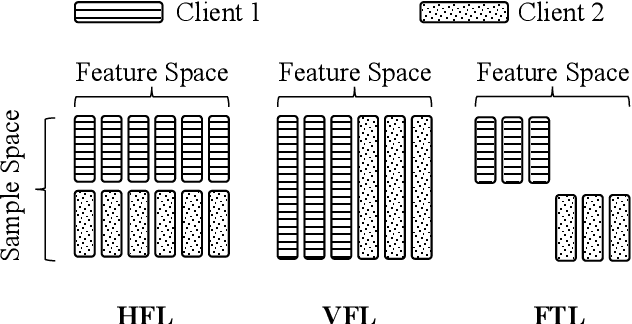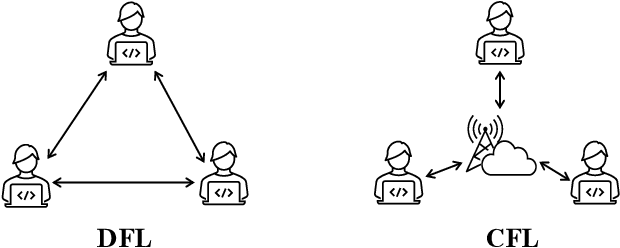Yanli Li
FedKD-hybrid: Federated Hybrid Knowledge Distillation for Lithography Hotspot Detection
Jan 07, 2025



Abstract:Federated Learning (FL) provides novel solutions for machine learning (ML)-based lithography hotspot detection (LHD) under distributed privacy-preserving settings. Currently, two research pipelines have been investigated to aggregate local models and achieve global consensus, including parameter/nonparameter based (also known as knowledge distillation, namely KD). While these two kinds of methods show effectiveness in specific scenarios, we note they have not fully utilized and transferred the information learned, leaving the potential of FL-based LDH remains unexplored. Thus, we propose FedKDhybrid in this study to mitigate the research gap. Specifically, FedKD-hybrid clients agree on several identical layers across all participants and a public dataset for achieving global consensus. During training, the trained local model will be evaluated on the public dataset, and the generated logits will be uploaded along with the identical layer parameters. The aggregated information is consequently used to update local models via the public dataset as a medium. We compare our proposed FedKD-hybrid with several state-of-the-art (SOTA) FL methods under ICCAD-2012 and FAB (real-world collected) datasets with different settings; the experimental results demonstrate the superior performance of the FedKD-hybrid algorithm. Our code is available at https://github.com/itsnotacie/NN-FedKD-hybrid
Threats and Defenses in Federated Learning Life Cycle: A Comprehensive Survey and Challenges
Jul 11, 2024



Abstract:Federated Learning (FL) offers innovative solutions for privacy-preserving collaborative machine learning (ML). Despite its promising potential, FL is vulnerable to various attacks due to its distributed nature, affecting the entire life cycle of FL services. These threats can harm the model's utility or compromise participants' privacy, either directly or indirectly. In response, numerous defense frameworks have been proposed, demonstrating effectiveness in specific settings and scenarios. To provide a clear understanding of the current research landscape, this paper reviews the most representative and state-of-the-art threats and defense frameworks throughout the FL service life cycle. We start by identifying FL threats that harm utility and privacy, including those with potential or direct impacts. Then, we dive into the defense frameworks, analyze the relationship between threats and defenses, and compare the trade-offs among different defense strategies. Finally, we summarize current research bottlenecks and offer insights into future research directions to conclude this survey. We hope this survey sheds light on trustworthy FL research and contributes to the FL community.
Integrated feature analysis for deep learning interpretation and class activation maps
Jul 01, 2024Abstract:Understanding the decisions of deep learning (DL) models is essential for the acceptance of DL to risk-sensitive applications. Although methods, like class activation maps (CAMs), give a glimpse into the black box, they do miss some crucial information, thereby limiting its interpretability and merely providing the considered locations of objects. To provide more insight into the models and the influence of datasets, we propose an integrated feature analysis method, which consists of feature distribution analysis and feature decomposition, to look closer into the intermediate features extracted by DL models. This integrated feature analysis could provide information on overfitting, confounders, outliers in datasets, model redundancies and principal features extracted by the models, and provide distribution information to form a common intensity scale, which are missing in current CAM algorithms. The integrated feature analysis was applied to eight different datasets for general validation: photographs of handwritten digits, two datasets of natural images and five medical datasets, including skin photography, ultrasound, CT, X-rays and MRIs. The method was evaluated by calculating the consistency between the CAMs average class activation levels and the logits of the model. Based on the eight datasets, the correlation coefficients through our method were all very close to 100%, and based on the feature decomposition, 5%-25% of features could generate equally informative saliency maps and obtain the same model performances as using all features. This proves the reliability of the integrated feature analysis. As the proposed methods rely on very few assumptions, this is a step towards better model interpretation and a useful extension to existing CAM algorithms. Codes: https://github.com/YanliLi27/IFA
Holistic Evaluation Metrics: Use Case Sensitive Evaluation Metrics for Federated Learning
May 03, 2024Abstract:A large number of federated learning (FL) algorithms have been proposed for different applications and from varying perspectives. However, the evaluation of such approaches often relies on a single metric (e.g., accuracy). Such a practice fails to account for the unique demands and diverse requirements of different use cases. Thus, how to comprehensively evaluate an FL algorithm and determine the most suitable candidate for a designated use case remains an open question. To mitigate this research gap, we introduce the Holistic Evaluation Metrics (HEM) for FL in this work. Specifically, we collectively focus on three primary use cases, which are Internet of Things (IoT), smart devices, and institutions. The evaluation metric encompasses various aspects including accuracy, convergence, computational efficiency, fairness, and personalization. We then assign a respective importance vector for each use case, reflecting their distinct performance requirements and priorities. The HEM index is finally generated by integrating these metric components with their respective importance vectors. Through evaluating different FL algorithms in these three prevalent use cases, our experimental results demonstrate that HEM can effectively assess and identify the FL algorithms best suited to particular scenarios. We anticipate this work sheds light on the evaluation process for pragmatic FL algorithms in real-world applications.
 Add to Chrome
Add to Chrome Add to Firefox
Add to Firefox Add to Edge
Add to Edge